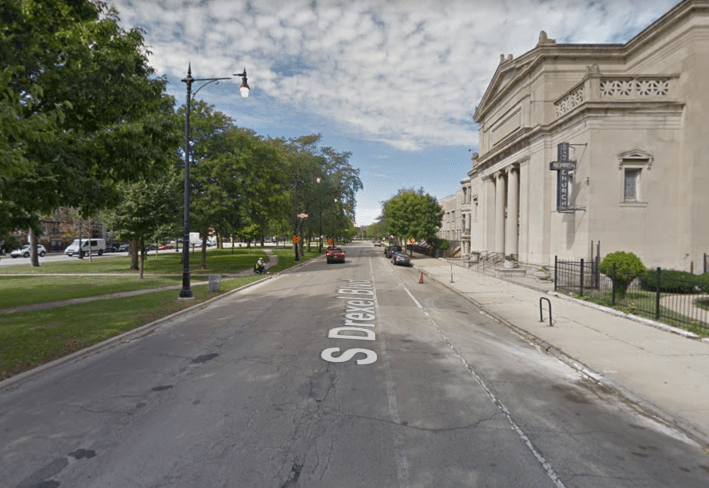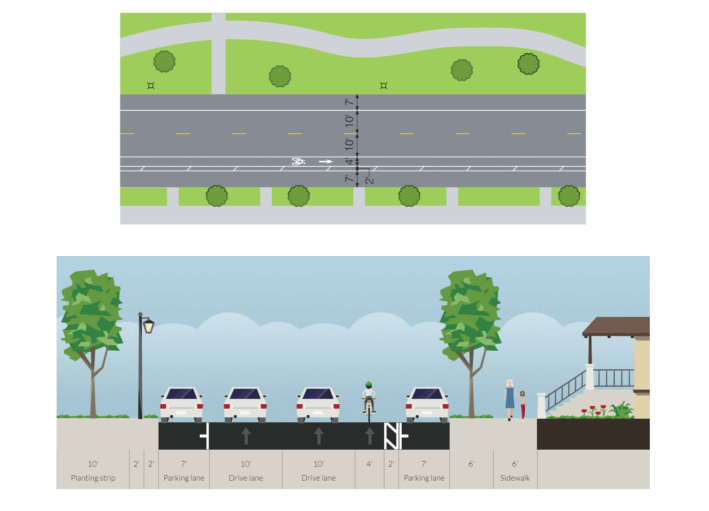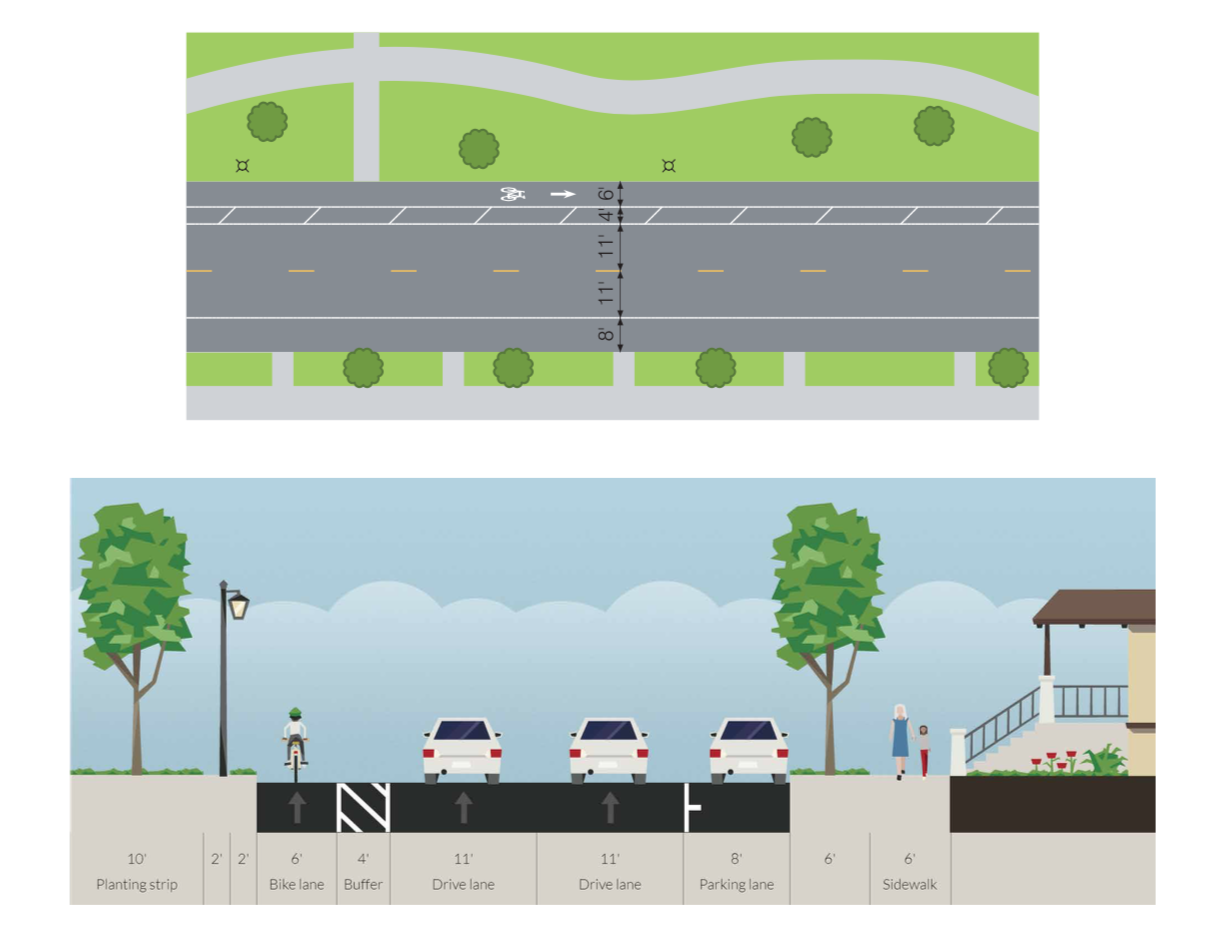The city is considering reconfiguring the bike lanes and/or parking on Drexel Boulevard from 39th and 51st, which is currently a fairly tranquil cycling route between Oakland and Hyde Park. The original, fully-funded Chicago Department of Transportation design calls for moving the bike lanes next to the grassy median, which would improve safety for cyclists because they wouldn’t have to worry about getting struck by opening car doors, among other benefits.
However, due to requests from residents for more car parking, CDOT has floated an alternative scenario that would add extra parking lane next to the median instead. However, there’s no funding to pay for that version, it would have no safety benefits for cyclist, and the additional parked cars would obscure residents’ views of the attractive green space.

According to CDOT, the first scenario would use funding from a federal Congestion Mitigation and Air Quality Improvement grant that is already approved, and the design is fully completed, so work can begin immediately on the two-mile stretch. Along with removing the dooring hazard, this layout would eliminate conflicts between the bike lanes and 11 “T” intersections. Cyclists would also get a nicer view the median to their left, an upgrade from the status quo of traveling between parked cars and moving vehicles.
The downside of relocating the bike lanes next to the median is that it’s likely drivers will park in them on Sundays. There are several churches along Drexel and, as is in the case on many of Chicago’s multi-lane boulevards, parishioners park on the inside travel lanes during services. This is technically illegal, but local aldermen invariably condone the practice, arguing that it’s a neighborhood tradition.
CDOT spokesman Mike Claffey acknowledged that, since there are no plans for plastic posts or concrete curbs to discourage churchgoers from continuing to park by the median, it’s likely that the new bike lanes would be blocked by cars on some stretches on Sundays. A CDOT rendering of the design goes as far as to state that it “allows for parking against the median during church services,” even though there is no indication that the practice will be legalized. However, Claffey added that at other times parking demand is low enough that it’s more likely motorists will park in the outside parking lanes.

Kyle Terry, an urban planner and real estate analyst who lives just south of King’s Ward in Hyde Park says that while he thinks moving the bike lanes next to the median would be beneficial overall, adding new parking lanes is a bad idea. “The issues are safety, aesthetics, and induced demand [the phenomenon of more people choosing to dive when driving is made easier],” he said. “They should reward people for getting out of their cars with a beautiful, safe ride. Terry noted that under Proposal 2, cyclists could still get doored by people leaving their cars, and parked cars next to the medians could make it harder for motorists and pedestrians crossing the boulevard to see each other.
Streetsblog’s Steven Vance noted that, according to Illinois Department of Transportation traffic counts, four-lane Drexel sees an average of only 1,400 cars a day in each direction. Studies show that a two-lane street with turn lanes can accommodate up to 20,000 cars a day without undue congestion. Therefore, Steven argued, there would be no traffic impacts if travel lanes were eliminated on each side of the boulevard to make room for converting the existing parking lanes to diagonal parking, creating more capacity. That would make it possible to add bike lanes next to the median with curb protection, or at least flexible posts.
Alderman King encourages anyone with an opinion about the matter to contact her office at ward04[at]cityofchicago.org or (773) 536-8103, but of course the opinions of people who live in the ward will hold more weight.
Streetsblog Chicago will resume publication on Tuesday. Have a great Memorial Day!
This post is made possible by a grant from the Illinois Bicycle Lawyers at Keating Law Offices, P.C., a Chicago, Illinois law firm committed to representing pedestrians and cyclists. The content is Streetsblog Chicago's own, and Keating Law Offices neither endorses the content nor exercises any editorial control.





